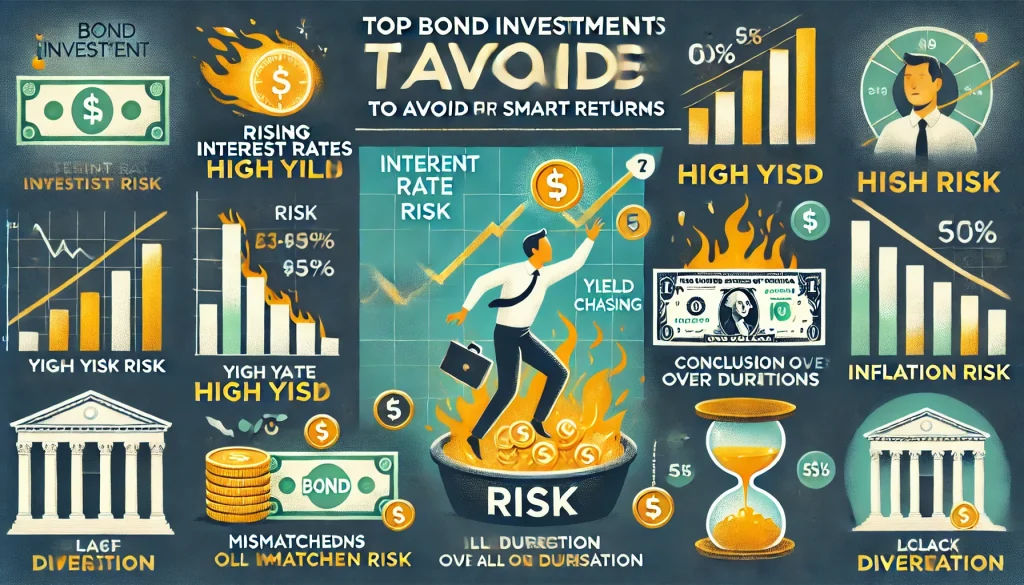
Investing in high-yield bonds can be an effective strategy for generating income, but it comes with its own set of risks. Unlike government bonds, high-yield bonds prove to be an ideal investment option among Indian bonds. To make informed investment decisions, it is crucial to know what factors to consider before choosing one. In this guide, you will explore the key aspects to look for when searching for high-yield bonds.
How Can I Find High-Yield Bonds?
Identifying high-yield bonds requires a strategic approach and thorough bond research. Here is a step-by-step guide to help you make informed decisions:
Check the Issuer’s Financial Strength
Understanding the financial health of the high-yielding bond issuer is essential. Just as you would assess a borrower’s financial situation before lending money, it is important to evaluate the issuer’s profitability, debt levels and cash flow. A financially stable issuer with manageable debt and strong cash flow is less likely to default, offering more security to bondholders. Review key financial ratios to understand the financial strength of the issuer.
Research Credit Ratings
One of the key points to consider in finding bonds with high yield is to assess the credit ratings assigned by reputable agencies such as ICRA, CRISIL and CARE. These ratings reflect the issuer’s ability to meet its debt obligations. Bonds with higher ratings (AAA, AA or A) typically offer more stability and a lower risk of default, making them a safer investment.
Assess Yield vs. Risk
When selecting high-yield bonds, it is important not to fall into the trap of chasing the highest yields without performing a risk assessment. Bond yields represent the expected returns from an investment, but higher yields often indicate higher risk, particularly with lower-rated issuers. Higher-risk bonds can deliver greater returns, but they may also be more vulnerable to economic downturns or issuer-specific challenges. Always weigh the potential yield against the level of risk you are willing to take for high-yield bonds.
Understand Bond Tenures
The maturity of a bond is the date when the issuer repays the principal amount. High-yield bonds with shorter maturities generally carry lower risk because they are exposed to fewer uncertainties and market fluctuations over time. On the other hand, longer-term high-yield bonds may carry greater risk, as there is more time for potential financial issues or changes in market conditions to arise.
Stay Updated on Economic and Market Trends
Economic conditions and interest rate movements can significantly affect the high-yield bond market. Keeping track of news and reports on India’s economy, as well as the Reserve Bank of India’s monetary policies, can help you make better decisions when seeking high-yield bonds.
Consult a Financial Advisor
If you are unsure about choosing high-yield bonds yourself, consider professional management. Many platforms offer advisory services that can guide you to suitable investments based on your risk tolerance and financial goals. Financial advisors can also help diversify your bond holdings to spread risk.
By following these steps, you can identify high-yield bonds that align with your financial objectives while managing risks effectively.
Why Should You Invest in High-Yield Bonds?
High-yield bonds offer compelling benefits. Here is why they might be a smart addition to your investment strategy:
Diversification
High-yield bonds, often rated below investment grade, have a weak correlation with safer options like government or AAA-rated corporate bonds. These high-return investments carry more risk. Adding these bonds to your portfolio can spread risk and increase the potential for steady fixed-income earnings, although it will not completely eliminate risk.
Potential for Capital Gains
High-yield bonds can appreciate in value when the issuing company improves its financial standing or experiences positive events such as mergers, acquisitions or better earnings reports. Capital gains are higher when the issuer meets or exceeds expectations, making this a critical factor to assess in such investments.
Equity-Like Returns
High-yield bonds often exhibit characteristics similar to equities, offering long-term returns and greater income stability. They also give bondholders higher priority over stockholders in cases of bankruptcy or liquidation, making them less risky than equities.
Shorter Durations
Most high-yield bonds have maturity periods under 10 years and are often callable within 5-6 years. They are less affected by daily interest rate fluctuations and can perform well even in economic downturns if the issuer maintains strong earnings.
Final Word
Overall, investing in high-yield bonds can be a rewarding strategy if done with careful consideration. By thoroughly researching these bonds, you can identify the ones that suit your investment goals. With a thoughtful approach, high-yield bonds can become a valuable part of your investment portfolio, enhancing returns while keeping risks in check.
Frequently Asked Questions
You can invest in high-yield bonds by following any of the below methods:
Purchase directly through a stockbroker or dealer who allows you to select individual high-yield bonds based on your preferences.
Invest in bond mutual funds or ETFs, which pool a variety of high-yield bonds. This approach offers added security, as a professional fund manager is responsible for selecting the appropriate bonds to include in the portfolio.

